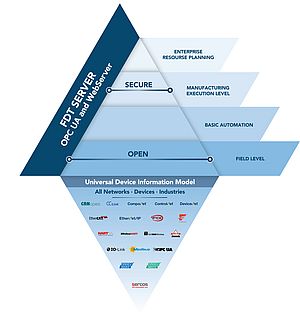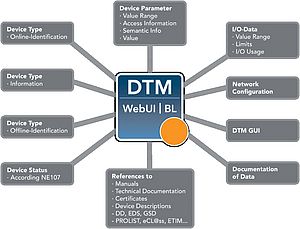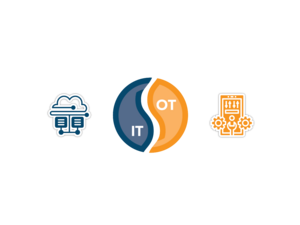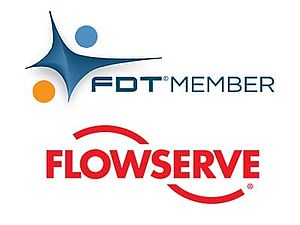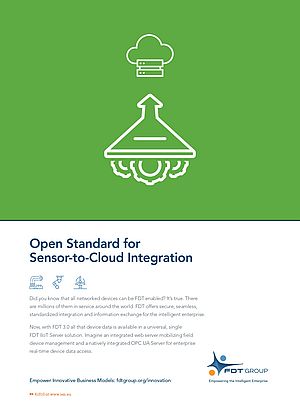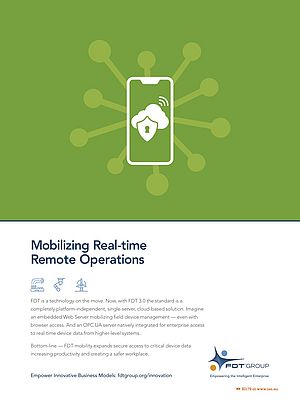Today’s plant or factory operator has taken on a critical, multi-faceted and data-empowered role in manufacturing process due to the ability to leverage data from many sources; make objective decisions based on complex, real-time information; and understand the system to solve problems.
Mobility’s move from management offices to production operations couldn’t come at a better time. With the arrival of IIoT technologies, manufacturers are already seeing changes in enterprise data capture and analysis. Predictive and contextualized information is quickly becoming the norm, along with immediate access to data details.
Supporting smart manufacturing
FDT Group, an independent, international, not-for-profit industry association consisting of leading companies and organizations active in industrial automation, continues to evolve its open standard for enterprise-wide network and asset integration as a data-centric platform. The organization is dedicated to meeting the requirements for mobile device connectivity on the industrial shop floor and in the field. Its goal is to enable automation end users to employ the functionality they appreciate in the FDT integration standard on all of the leading mobile platforms. This mobility integration will provide access to additional data with flexible deployment options.
The recently released FDT 3.0 specifications include the FDT IIoT Server (FITS™) platform, which empowers automation vendors to support smart manufacturing operations. FITS includes comprehensive security, an OPC Unified Architecture (UA) Server for IT/OT data access and a Web Server for mobile and remote access.
Role in expanded mobility
With the latest advancements, FDT technology is mobilizing monitoring of industrial facilities and processes, as well as specific networks and devices, as part of modern asset management strategies. Lifecycle monitoring, maintenance and real-time data monitoring can now be done via web browsers on smart phones, tablets, laptops, desktops, independent of Distributed Control Systems (DCSs), Programmable Logic Controllers (PLCs) and other control assets.
The key driver of FDT’s support for mobility functionality starts with its core technology component—Device Type Managers™ (DTMs™) running the new FDT 3.0 standard. Unlike DTMs based on the earlier FDT 1.2 or FDT 2.0 standards, FDT 3.0 DTMs employ responsive and touch screen features as part of a modern HTML 5.0 development environment, which are mandatory for use with tablets and smart phones.
All FDT 3.0 DTMs comply with the NAMUR NE-107 recommendation, which stipulates that operators need a view of the process including the status of the instrumentation in a simple and uniform way—regardless of source device—to support predictive maintenance strategies.
The Web User Interface (UI) with FDT 3.0 allows DTMs to be opened in any browser, including mobile devices carried by field personnel. Manufacturers can utilize the technology’s standardized mobility platform as part of their service functionality, helping site engineers solve problems with remote assistance.
At the same time, FDT Web Services provides a standardized mobile access approach utilizing browsers, apps, standalone applications, or anything else capable of interfacing via web sockets.
Looking to the future
From business decision-making to process workflows, user interfaces, and proactive maintenance, new utilizations of mobility technology are drastically changing the way manufacturing gets done.
The FDT standard maintains its core communication and diagnostic capabilities, but now offers secure remote access to data through mobile devices and web sockets so that other applications can take part in the exchange of information. Indeed, FDT opens the automation architecture to allow for more points of access from a data and user interface perspective.
Glenn Schulz – FDT Group Managing Director







